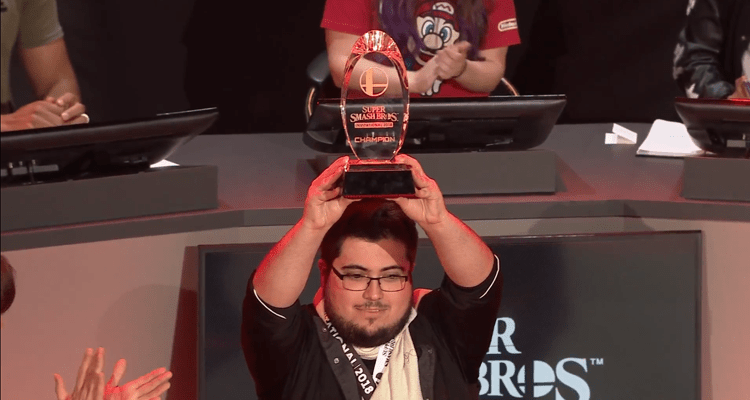Now that the dust has finally settled from Nintendo’s E3 presentation and the curtain has been raised on Super Smash Bros. Ultimate, we’re finally getting a sense of what we can expect from Nintendo’s flagship fighting game series when it launches this December.
And oddly enough, the new features, changes, and additions seem different this time around. For a company (and a creator in Masahiro Sakurai) that are infamous for refusing to listen to input from fans, Super Smash Bros. Ultimate sure seems like it has been inspired by the competitive community.
Nintendo’s History (or Lack Thereof) with the Competitive Smash Community
Ask any competitive Super Smash Bros. player about Nintendo’s support of the community, no matter what their game of choice is, and you’ll likely get the same answer: They don’t care.
And that has held true ever since the original game came out. Nintendo has positioned the Super Smash Bros. series as a casual fighter meant for parties, and has historically been very resistant to the concept that it can be played in any kind of codified professional way.
Nintendo never hosts official Smash tournaments outside the occasional invitational event. They rarely sponsor major fighting game tournaments either. Nintendo’s relationship with people who play Smash competitively has been tumultuous at best, and at worst, outright hostile.
Super Smash Bros. Brawl probably represents the worst of this. After years of refusing to provide financial support to tournaments that featured Melee, Brawl released and was incredibly well-received, but the addition of random tripping and lack of patching meant that Brawl would never be as accepted by the competitive community as Melee was. This was by design. To Nintendo, playing these games competitively was playing the game the wrong way.
This even continued through the last generation of games. Super Smash Bros. for the Wii U and 3DS featured online play, sure, but the For Glory mode of play seemed like an afterthought, seeing as team battles were restricted to time mode, and the only legal stages were Final Destination clones.
Adding to this is the fact that Nintendo seemed hell-bent on denying that the Melee competitive scene even existed until the Smash Invitational last week, save for a few grudging (and awkward) appearances from select pro players. It was jarring to see so many Melee players featured in Nintendo’s intro video to the Smash Invitational last week because they’ve avoided the scene until that point.
Fan Complaints
The competitive scene for Super Smash Bros. for the Wii U and 3DS remains strong to this day, but as a competitive game, pro players have a lot of gripes with it. The game rewards defensive play, staying in shield, and waiting for your opponent to move first. If this sounds boring, that’s because it can be.
There are plenty of other complaints too. There are very few stages that are suitable for competitive play, and as more characters got added to the game, that list got whittled down even further by tournament organizers. DLC characters caused controversy as well, even before Bayonetta witch-twisted her way into the top 8 of every tournament. Nobody liked playing against Cloud because of Finishing Touch (which was nerfed, but still). There were tons of arguments about “toxic” characters, and certain regions banned Bayonetta from play altogether, much like Meta Knight was banned in Brawl.
At first, Omega Stages seemed like a concession to the competitive community, but turning a stage into Final Destination didn’t really prove to be all that much of a boon unless the normal Final Destination stage gave you eye strain.
In a lot of ways, the Wii U entry in the series seemed like a half-hearted concession to the competitive community. They look like they’re going to go the whole nine yards for the Switch entry.
Times Are A-Changin’
All this is to say that Nintendo finds itself in a precarious situation leading up to the release of Super Smash Bros. Ultimate. They don’t want the skill barrier to be as high as it was in Melee, but they want to reward the competitive community that has spent years learning these games.
What they’ve come up with so far seems to be toeing that line beautifully. The return of directional air dodges is a great concession to the Melee community, who will be waiting with bated breath over whether or not wavedashing will be a viable mechanic in Super Smash Bros. Ultimate. They’ve made short hop aerials, a popular approach advanced technique, a whole lot easier to perform. They’ve not only added Omega Stages back, but they’ve also added Battlefield variants for each stage, and included the ability to turn off stage hazards. (This is already a sticking point for many tournament organizers — what happens if there are too many legal stages?)
The change that has Super Smash Bros. for the Wii U and 3DS fans salivating is that they have added a significant penalty for rolling and dodging. They want to foster a more aggressive style of play which will, ideally, lead to more stunning and exciting moments (which will now be highlighted with a short slowdown cutscene).
Now, of course, time will tell whether or not this represents a change in strategy for the company. There’s no guarantee that Nintendo will suddenly start sponsoring local tournaments or hosting their own. Hell, there’s no guarantee they’ll fix Bayonetta.
But for now, competitive Smash fans are feeling like Nintendo has given them everything that they’ve asked for.
Well, everything except for Geno.










Published: Jun 21, 2018 10:20 pm